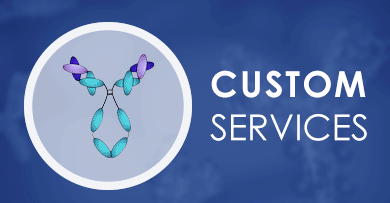 Loading...
Loading...

KIT
Cancer-related genes, CD markers, Disease related genes, Enzymes, FDA approved drug targets, Human disease related genes, Metabolic proteins, Plasma proteins, RAS pathway related proteins
Membrane
Cell type enhanced (granulocytes, Melanocytes, Inhibitory neurons, Ionocytes, Breast glandular cells)
Group enriched (basophil, NK-cell, eosinophil)
Group enriched (HEL, HMC-1)
Monomer in the absence of bound KITLG/SCF. Homodimer in the presence of bound KITLG/SCF, forming a heterotetramer with two KITLG/SCF molecules. Interacts (via phosphorylated tyrosine residues) with the adapter proteins GRB2 and GRB7 (via SH2 domain), and SH2B2/APS. Interacts (via C-terminus) with MPDZ (via the tenth PDZ domain). Interacts (via phosphorylated tyrosine residues) with PIK3R1 and PIK3 catalytic subunit. Interacts (via phosphorylated tyrosine) with CRK (isoform Crk-II), FYN, SHC1 and MATK/CHK (via SH2 domain). Interacts with LYN and FES/FPS. Interacts (via phosphorylated tyrosine residues) with the protein phosphatases PTPN6/SHP-1 (via SH2 domain), PTPN11/SHP-2 (via SH2 domain) and PTPRU. Interacts with PLCG1. Interacts with DOK1 and TEC. Interacts (KITLG/SCF-bound) with IL1RL1. Interacts with IL1RAP (independent of stimulation with KITLG/SCF). A mast cell-specific KITLG/SCF-induced interleukin-33 signaling complex contains IL1RL1, IL1RAP, KIT and MYD88.
Kinase, Receptor, Transferase, Tyrosine-protein kinase
- Mouse Anti-KIT Recombinant Antibody (clone 21G5) (MOB-1436z)
-
- Derivation: Mouse
- Species Reactivity: Human
- Type: Mouse IgG
- Application: ELISA, IHC, WB
-
- Derivation: Mouse
- Species Reactivity: Human
- Type: Mouse Fab
- Application: WB, FuncS
-
- Derivation: Human
- Species Reactivity: Human
- Type: Human Fab
- Application: ELISA
-
- Derivation: Mouse
- Species Reactivity: Human
- Type: Mouse IgG
- Application: WB, FuncS
-
- Derivation: Human
- Species Reactivity: Human
- Type: Human IgG
- Application: ELISA
-
- Derivation: Human
- Species Reactivity: Human
- Type: Human Fab
- Application: WB, ELISA, FuncS
-
- Derivation: Human
- Species Reactivity: Human
- Type: Human IgG
- Application: WB, ELISA, FuncS
-
- Derivation: Human
- Species Reactivity: Human
- Type: Human scFv
- Application: WB, ELISA, FuncS
-
- Derivation: Human
- Species Reactivity: Human
- Type: Human scFv
- Application: ELISA
-
- Derivation: Mouse
- Species Reactivity: Human
- Type: Mouse scFv
- Application: WB, FuncS
- Recombinant Mouse Anti-KIT Antibody (A3C6E2) (NEUT-1629CQ)
-
- Species Reactivity: Human
- Type: IgG1, κ
- Application: FC, BL
- Recombinant Mouse Anti-KIT Antibody (CBL788) (NEUT-1630CQ)
-
- Species Reactivity: Human
- Type: IgG1
- Application: WB, FC, CyTOF, ELISA(Cap), Neut
-
- Species Reactivity: Human
- Type: Mouse antibody
- Application: ELISA
-
- Derivation: Phage display library screening
- Type: IgG
- Application: IHC-P, IHC-Fr
- Recombinant Mouse Anti-KIT Antibody (14G5) (NEUT-1631CQ)
-
- Species Reactivity: Human
- Type: IgG1
- Application: Neut, WB
- Recombinant Mouse Anti-KIT Antibody (12A8) (NEUT-1632CQ)
-
- Species Reactivity: Human
- Type: IgG1
- Application: WB, IP, FC, Neut
- Recombinant Rat Anti-Kit Antibody (ACK2) (NEUT-1633CQ)
-
- Species Reactivity: Mouse
- Type: IgG2b, κ
- Application: FC, BL, Depletion
- Recombinant Mouse Anti-KIT Antibody (CBL158) (NEUT-1634CQ)
-
- Species Reactivity: Human
- Type: IgG1
- Application: Neut, WB
- Mouse Anti-KIT Recombinant Antibody (clone Kit2C75); Fab Fragment (FAMAB-0024-CN-F(E))
-
- Derivation: Mouse
- Species Reactivity: Chicken
- Type: Mouse Fab
- Application: FC
-
- Species Reactivity: Human
- Type: IgG
- Application: WB, IF, ICC
Our customer service representatives are available 24 hours a day, from Monday to Sunday. Contact Us
Can't find the products you're looking for? Try to filter in the left sidebar.Filter By Tag
For Research Use Only. Not For Clinical Use.
